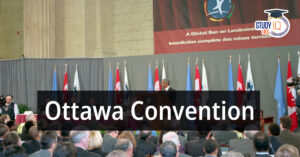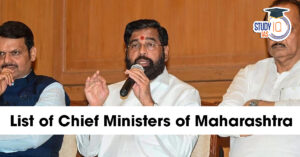Table of Contents
United Nations Day 2024
United Nations Day 2024, observed on October 24, marks the anniversary of the UN’s founding in 1945. This year’s theme, “Global Cooperation for a Better Future,” emphasizes the importance of nations working together to address pressing global challenges such as climate change, poverty, and conflict resolution. The day highlights the UN’s role in promoting peace, security, and sustainable development, while advocating for human rights and social justice. United Nations Day serves as a reminder of the collective efforts needed to build a more peaceful, equitable, and prosperous world for future generations.
United Nations Day 2024 Theme
The theme for United Nations Day 2024 is “Global Cooperation for a Better Future.” This theme highlights the critical importance of nations working together to address global challenges such as climate change, poverty, inequality, and conflict resolution. It underscores the United Nations’ mission of promoting peace, security, and sustainable development, while advocating for human rights and global solidarity. Through this theme, the UN encourages international collaboration to build a more equitable, prosperous, and peaceful future for all, reinforcing the idea that only through unity can we tackle the world’s most pressing issues.
United Nations
It is an international organisation founded in 1945 after World War II with the mission of maintaining international peace and security, promoting social progress, better living standards, and human rights. Initially established with 51 member countries, the UN now consists of 193 member states and two observer states (Holy See and Palestine). The UN headquarters is in New York City, and its key governing bodies include:
- General Assembly: The main deliberative body where all member states have equal representation.
- Security Council: Responsible for maintaining international peace and security, consisting of 15 members (5 permanent and 10 non-permanent), with the permanent members having veto power (US, UK, France, Russia, China).
- International Court of Justice (ICJ): Settles legal disputes between member states.
- Secretariat: Headed by the UN Secretary-General, it administers the programs and policies of the UN.
- Economic and Social Council (ECOSOC): Coordinates the UN’s economic and social work, including Sustainable Development Goals (SDGs).
The UN plays a significant role in addressing global challenges, including humanitarian assistance, conflict resolution, climate action, human rights protection, and poverty reduction.
United Nations Foundation
In 1899, the International Peace Conference met in The Hague to devise strategies for peaceful conflict resolution, averting war, and codifying war laws. It established the Permanent Court of Arbitration, which began operations in 1902, and adopted the Pacific Settlement of International Disputes. The UN International Court of Justice had its antecedent in this court.
The League of Nations, established in 1919 as part of the Treaty of Versailles “to promote international cooperation and to achieve peace and security,” was the predecessor to the United Nations. It was created in the context of World War I. In addition, the Treaty of Versailles established the International Labor Organization (ILO) as a League affiliate organisation in 1919.
The term “United Nations” was coined by United States President Franklin D. Roosevelt. In 1942, 26 countries agreed to continue fighting against the Axis Powers (the Rome-Berlin-Tokyo Axis) by signing The Declaration by the United Nations, which prohibited them from negotiating their own peace terms.
The United Nations Charter was signed in 1945 at the United Nations Conference on International Organization in San Francisco, California. The 1945 UN Charter established the United Nations as an intergovernmental body. António Guterres, the United Nations’ ninth Secretary-General, took office on January 1, 2017.
United Nations Day
United Nations Day (October 24) commemorates the United Nations Charter’s entry into force in 1945. The UN General Assembly declared on October 31, 1947, by resolution that the Day would be dedicated to raising awareness of the Organization’s goals and achievements and gaining support for its work.
United Nations Functions
The organization’s goals, as stated in the Charter, are preserving world peace and security, defending human rights, providing humanitarian help, fostering sustainable development, and upholding international law. The United Nations initially had 51 members; by 2011, this number had increased to 193, reflecting the great majority of independent states in the world.
Principal Organs of the United Nations
The Principal Organs of the United Nations are:
| S. No. | Name of the Organs |
| 1. | United Nations General Assembly |
| 2. | United Nations Security Council |
| 3. | United Nations Economic and Social Council |
| 4. | United Nations Trusteeship Council |
| 5. | United Nations International Court of Justice |
| 6. | UN Secretariat |
United Nations General Assembly
The General Assembly is the UN’s primary decision-making, policy-making, and representative body. Because it is made up of representatives from each of the 193 UN Member States, the General Assembly is the only UN body with universal representation. The whole UN membership convenes annually in September for the annual General Assembly session and general debate at the General Assembly Hall in New York, to which many heads of state are invited and participate.
A two-thirds majority of the General Assembly is necessary to decide on crucial issues like budgetary matters, admission of new members, and questions of peace and security. Some decisions are made by a simple majority. Each year, the General Assembly elects a president to hold office for a term of one year. Csaba Korosi is the Incumbent president of UNGA
United Nations Security Council
In accordance with the UN Charter, it is in charge of maintaining global peace and security. The Security Council is made up of fifteen member states: ten non-permanent members chosen for two-year terms by the General Assembly on a regional basis, and five permanent members. China, France, Russia, the United Kingdom, and the United States are all represented.
The term “veto power” refers to the ability of any permanent member to veto (reject) any Security Council resolution. The absolute veto power of the five states has been criticised as the UN’s least democratic feature. The primary reason for the international delay on war crimes and crimes against humanity, according to critics, is the veto power.
The United States, however, resisted joining the UN in 1945 unless it was granted a veto. The League of Nations was ineffective in part because the United States was not a member. The veto is seen as a crucial bulwark against American dominance, a check against military incursions, and a supporter of global stability.
UN Economic and Social Council (ECOSOC)
It serves as the main organisation for coordination, policy evaluation, policy discourse, and recommendations on issues relating to the economy, society, and the environment. It also oversees the execution of internationally recognised development objectives. The General Assembly chose its 54 members for consecutive three-year mandates. It serves as the main forum for reflection, discussion, and creative thinking on sustainable development at the UN.
The work of ECOSOC is organised around a yearly subject that has global significance for sustainable development. This guarantees focused attention among the diverse partners of ECOSOC and across the UN development system. It coordinates the efforts of the ten functional commissions, five regional commissions, and the fourteen specialised agencies of the UN. It also receives reports from the nine funds and programmes of the UN and makes policy recommendations to the Member States and the UN system.
UN Trusteeship Council
Under Chapter XIII of the UN Charter, it was created in 1945. Trust territories are non-self-governing areas that have been placed under administrative control by the UN Trusteeship Council.
A League of Nations mandate, or the legal documents containing the internationally agreed-upon terms for managing the region on behalf of the League of Nations, was the legal status for some territories that were passed from one country’s control to another after World War I.
After the League of Nations ceased to exist in 1946, United Nations trust territories were established as the new owners of the remaining League of Nations mandates. It had to oversee the administration of 11 Trust Territories by seven Member States from a global perspective and make sure that the necessary steps were made to get the Territories ready for self-rule and independence.
All Trust Territories had achieved independence or self-government by 1994. On November 1st, 1994, the Trusteeship Council ceased operations.
UN International Court of Justice
The main court of the United Nations is the International Court of Justice. The United Nations Charter has established it in June 1945, and it officially started operating in April 1946. The Permanent Court of International Justice (PCIJ), which was founded by the League of Nations in 1920, was replaced by the ICJ.
UN Secretariat
The Secretary-General and tens of thousands of other worldwide UN employees make up the Secretariat, which carries out the day-to-day tasks assigned by the General Assembly and other key UN bodies. The General Assembly appointed the Secretary-General for a five-year term that is renewable in order to serve as the Organization’s main administrative official.
Internationally and locally recruited UN employees serve in duty stations and on peacekeeping missions all throughout the world.
Specialized Agencies of the UN
Each basic organ of the UN is allowed to create different specialised agencies to carry out its mandates, according to the UN Charter. The UN has 17 specialised organisations. These are listed in the following table:
| United Nations Specialized Agencies | |||
|---|---|---|---|
| Agency | Acronym | Headquarters | Founding Year |
| Food and Agriculture Organization | FAO | Rome, Italy | 1945 |
| International Telecommunication Union | ITU | Geneva, Switzerland | 1865 (Joined UN in 1947) |
| International Fund for Agricultural Development | IFAD | Rome, Italy | 1977 |
| International Labour Organization | ILO | Geneva, Switzerland | 1946 |
| International Maritime Organization | IMO | London, United Kingdom | 1948 |
| International Monetary Fund | IMF | Washington, United States | 1945 |
| United Nations Educational, Scientific and Cultural Organization | UNESCO | Paris, France | 1946 |
| World Health Organization | WHO | Geneva, Switzerland | 1948 |
| United Nations Industrial Development Organization | UNIDO | Vienna, Austria | 1966 |
| International Civil Aviation Organization | ICAO | Montreal, Canada | 1944 |
| World Intellectual Property Organisation | WIPO | Geneva, Switzerland | 1967 |
| International Fund for Agricultural Development | IFAD | Rome, Italy | 1977 |
| Universal Postal Union | UPU | Bern, Switzerland | 1874 |
| International Telecommunication Union | ITU | Geneva, Switzerland | 1865 |
| United Nations World Tourism Organization | UNWTO | Madrid, Spain | 1974 |
| World Meteorological Organisation | WMO | Geneva, Switzerland | 1950 |
| World Bank Group | WBG | Washington, D.C, USA | 1944 |
UN Agencies and Organisations
The UN system is made up of a number of organisations, bodies, institutions, and agencies. Some of them predate the UN’s foundation and were absorbed into the UN later on, while others were formed subsequently. They carry out crucial tasks across domains, geographies, and industries. A few notable examples of these organisations are listed in the table below.
| Important Agencies & Programs under the UN System | |||
| Agency | Acronym | HQ | Founding Year |
| United Nations Environment Programme | UNEP | Nairobi, Kenya | 1972 |
| United Nations Children’s Fund | UNICEF | New York, USA | 1946 |
| United Nations Population Fund | UNFPA | New York, USA | 1967 |
| United Nations High Commissioner for Refugees | UNHCR | Geneva, Switzerland | 1950 |
| United Nations Office on Drugs and Crime | UNODC | Vienna, Austria | 1997 |
| United Nations Interregional Crime and Justice Research Institute | UNICRI | Turin, Italy | 1968 |
| United Nations Office for Disaster Risk Reduction | UNDRR | Geneva, Switzerland | 1999 |
| United Nations Development Programme | UNDP | New York, USA | 1965 |
| United Nations University | UNU | Tokyo, Japan | 1972 |
| United Nations Conference on Trade and Development | UNCTAD | Geneva, Switzerland | 1964 |
| International Atomic Energy Agency | IAEA | Vienna, Austria | 1957 |
| United Nations Human Settlement Programme | UN-Habitat | Nairobi, Kenya | 1978 |
| Joint United Nations Programme on HIV/AIDS | UNAIDS | Geneva, Switzerland | 1994 |
| World Food Programme | WFP | Rome, Italy | 1961 |
| Office of the High Commissioner for Human Rights | OHCHR | Geneva, Switzerland | 1993 |
India’s Contribution to the United Nations
Since the UN’s inception, India has been an active member of UN. India was the first country to bring up the issues of racism and apartheid in South Africa in a UN forum in 1946. In 1948, India played an important role in the drafting of the Universal Declaration of Human Rights.
Vijayalakshmi Pandit, an Indian, was the first woman president of the United Nations General Assembly in 1953. India has made significant contributions to UN Peacekeeping Missions around the world.
India has sent peacekeepers to Korea, Egypt, Congo, Haiti, Angola, Somalia, Liberia, Rwanda, Lebanon, and South Sudan, among other places. India has consistently been one of the missions’ largest contributors of troops.
The nonviolent ideals of Mahatma Gandhi resonate strongly with the principles of the United Nations. The United Nations designated Gandhi’s birthday, October 2, as the “International Day of Nonviolence” in 2007. The United Nations General Assembly declared June 21st to be International Yoga Day in 2014.
Concerns Regarding the UN
- Ineffectiveness in Addressing Global Conflicts: The UN has struggled to prevent and resolve major conflicts such as the war in Ukraine, and Gaza, and other geopolitical tensions.
- Example: The UN Security Council (UNSC) has been found ineffective due to the use of veto power by permanent members and the lack of consensus among them.
- Lack of Inclusivity: Many developing countries, particularly from the Global South, feel underrepresented and sidelined in global governance.
- The Global North continues to dominate international decision-making on issues like food security, climate action, and development, often sidelining the interests of the Global South.
- Outdated Multilateral System: The current UN structure has failed to adapt to the changing geopolitical landscape.
- Failure to Enforce Climate: The UN has been ineffective in holding developed nations accountable for their climate commitments, especially regarding financial support for developing countries to meet climate goals and Sustainable Development Goals (SDGs).
- Stalled Dispute Resolution Mechanisms: The World Trade Organization (WTO) – a part of the broader UN system– has seen its dispute resolution mechanism grind to a halt due to the US blocking the appointment of new judges to the appellate body since 2019.
- As a result, over 600 trade disputes remain unresolved.
Opportunities for India’s Role
As the UN discusses the future of global governance, Prime Minister Modi is expected to address the need for reform in the UN itself. He will likely emphasise that countries like India should have a greater voice and say in the organisation’s decision-making processes. India’s rising global influence makes this argument increasingly relevant as the world moves toward a more multipolar structure.


 Phone-tapping in India, Legal Framework ...
Phone-tapping in India, Legal Framework ...
 Ottawa Treaty 1997, Objective, Members a...
Ottawa Treaty 1997, Objective, Members a...
 List of Chief Ministers of Maharashtra F...
List of Chief Ministers of Maharashtra F...





















